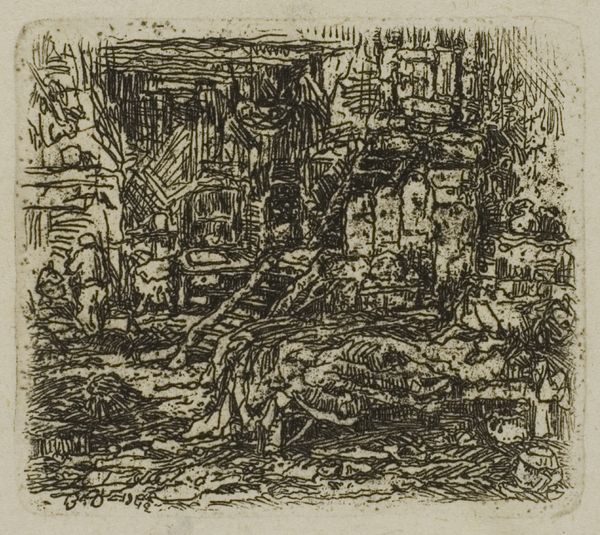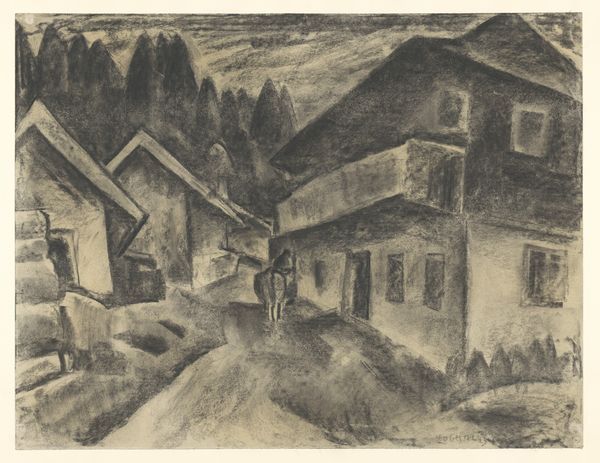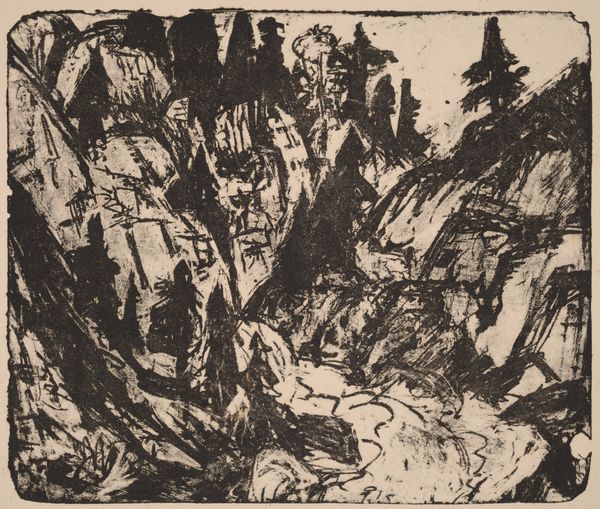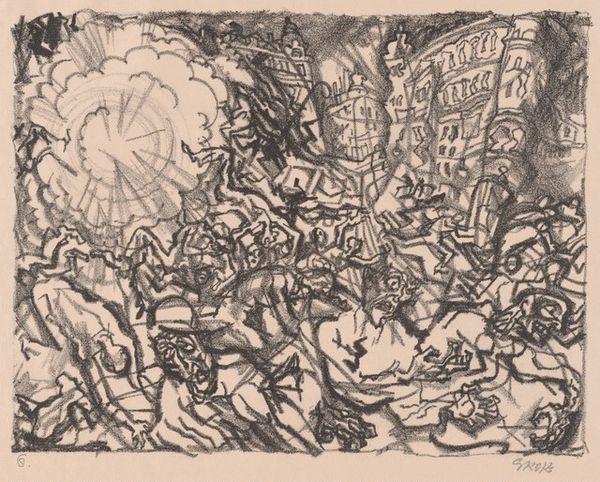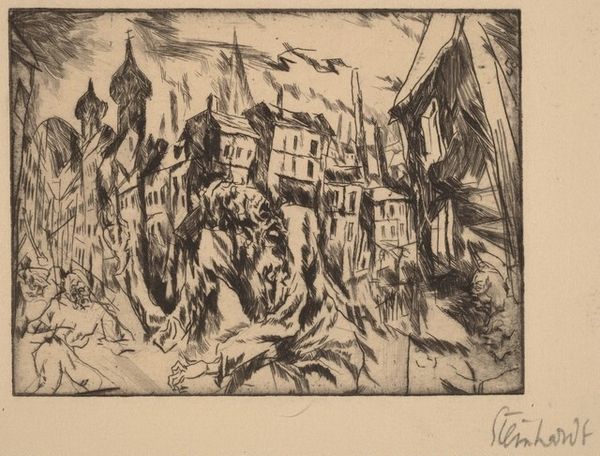
print, linocut, woodblock-print
# print
#
linocut
#
landscape
#
german-expressionism
#
figuration
#
linocut print
#
woodblock-print
#
mountain
Dimensions: height 520 mm, width 680 mm
Copyright: Rijks Museum: Open Domain
Editor: This linocut print, "Goatherd with his flock in the mountains" by Ernst Ludwig Kirchner, created sometime between 1890 and 1938, strikes me as incredibly dynamic, even chaotic. What’s your interpretation? Curator: It's more than just dynamic, isn’t it? It’s a visual articulation of the tensions inherent in modernity itself. Look at how the rough, almost violent linework depicts both the figure of the goatherd and the landscape. Does that visual language resonate with anything else you have encountered in your studies? Editor: Well, the chaotic composition and the angular lines make me think of other German Expressionist works. Is Kirchner using the landscape to reflect something about the individual or society? Curator: Absolutely. This piece, made between 1890 and 1938, reflects a period of intense social and political upheaval in Germany. The goatherd, seemingly at one with nature, could also be interpreted as a figure struggling against it. Are we seeing an idealized vision of pastoral life or is it a depiction of alienation from a rapidly industrializing society? Editor: That’s interesting. So, the contrast between the simple life of the goatherd and the harshness of the printmaking style highlights that tension? Curator: Precisely. And think about the socio-political climate during that time. What might it mean to depict a rural scene while Germany was rapidly modernizing and on the brink of war? Editor: It feels like Kirchner is using the goatherd as a symbol, perhaps of a longing for simpler times or as a critique of where society was headed. Curator: Indeed. By placing the goatherd and his flock within this fractured landscape, Kirchner compels us to confront uncomfortable questions about progress, identity, and our relationship with the natural world. It forces us to consider whose experiences are prioritized in the march toward so-called progress. Editor: I never thought of it that way. I appreciate how it challenges the traditional, romantic view of nature and asks us to consider its socio-political implications. Curator: Exactly! And it’s through interrogating those visual strategies that we unearth the deeper societal critiques embedded within the art.
Comments
No comments
Be the first to comment and join the conversation on the ultimate creative platform.
